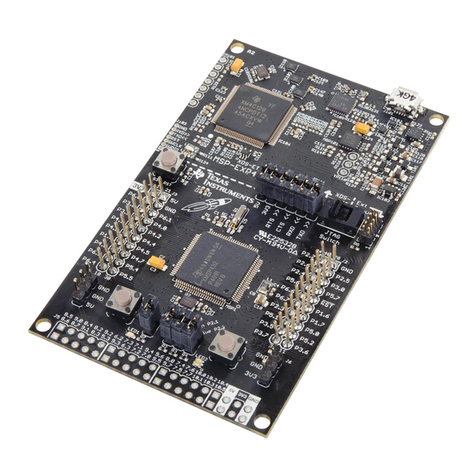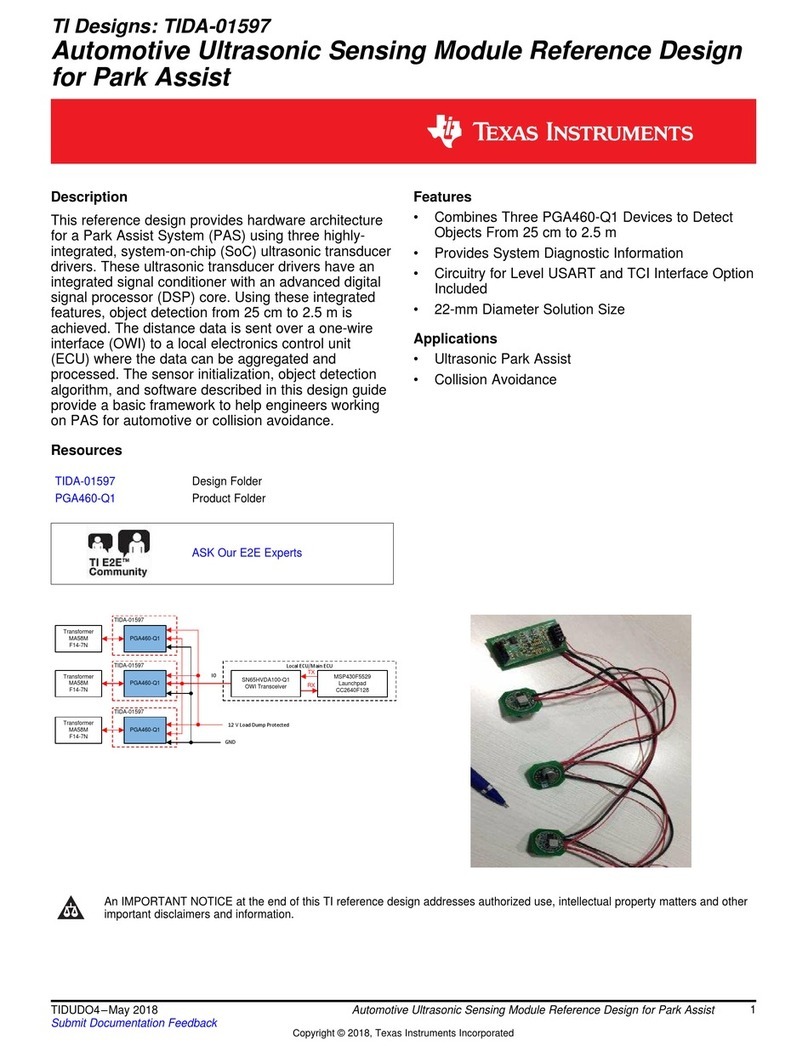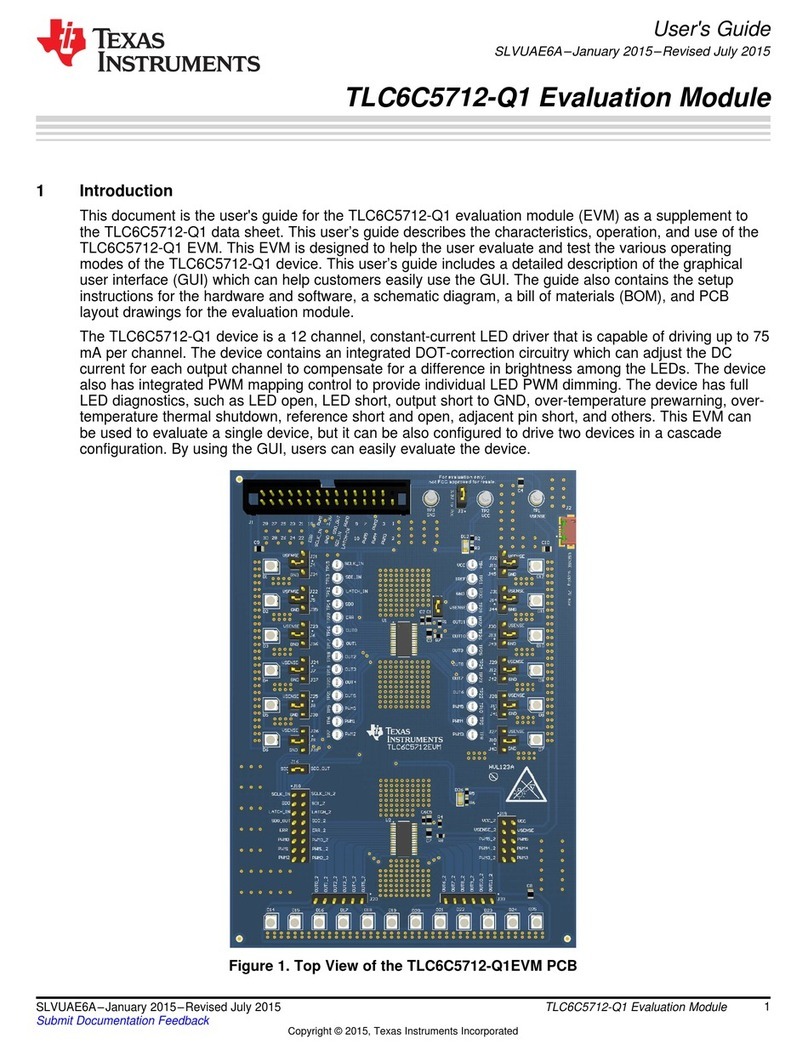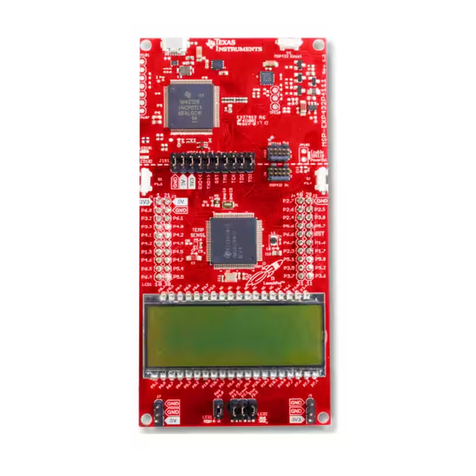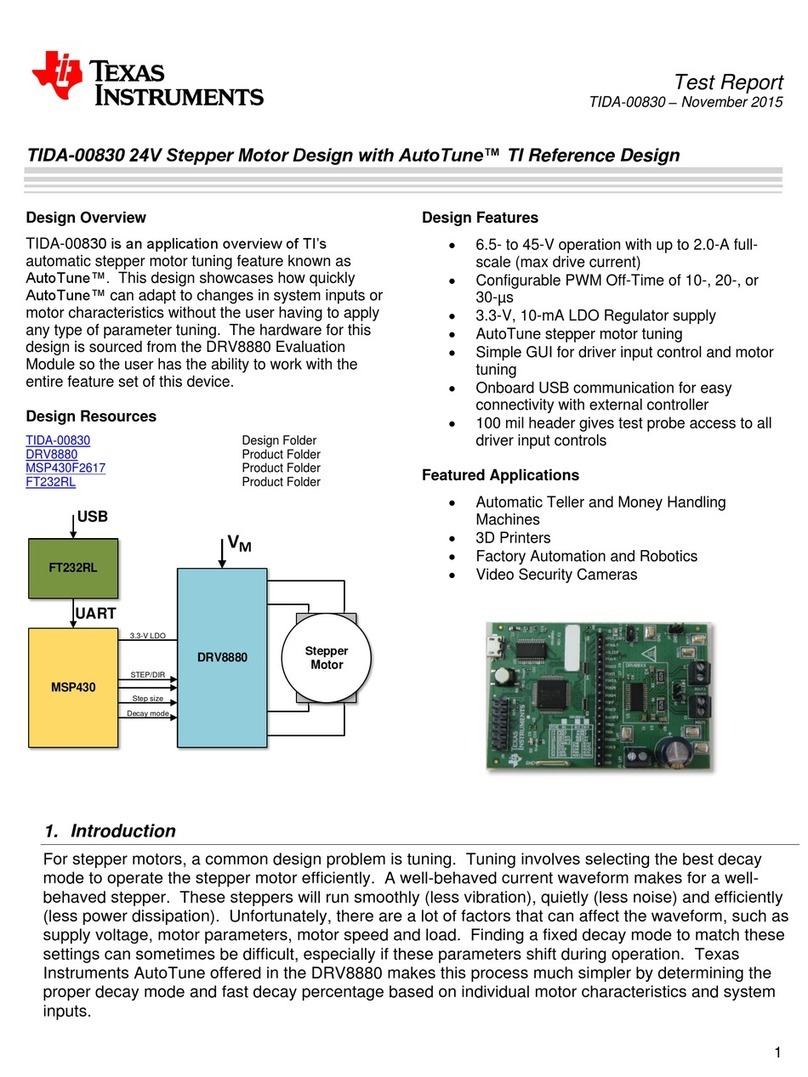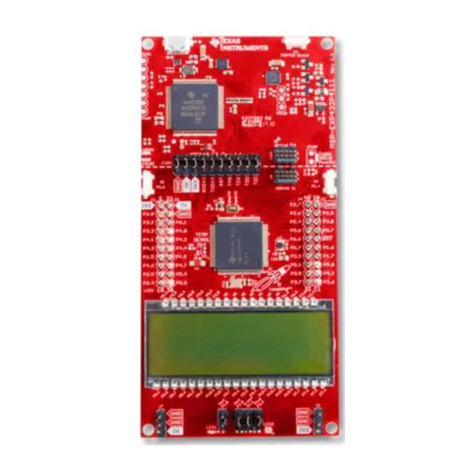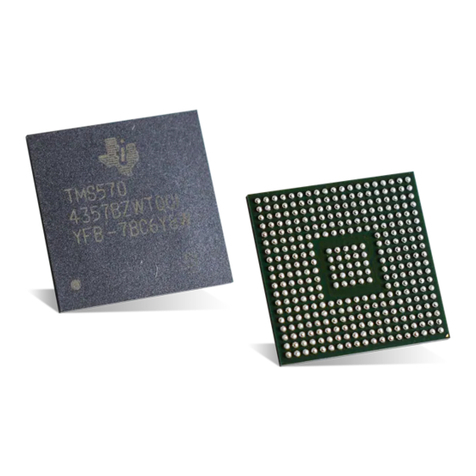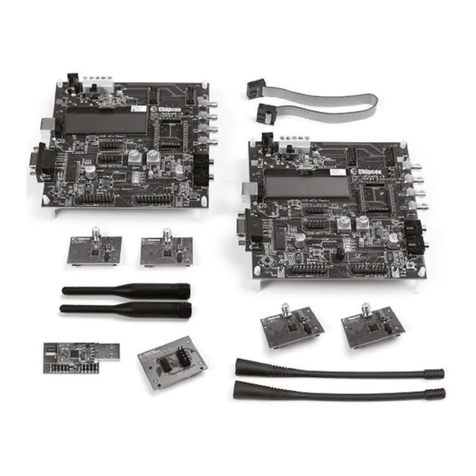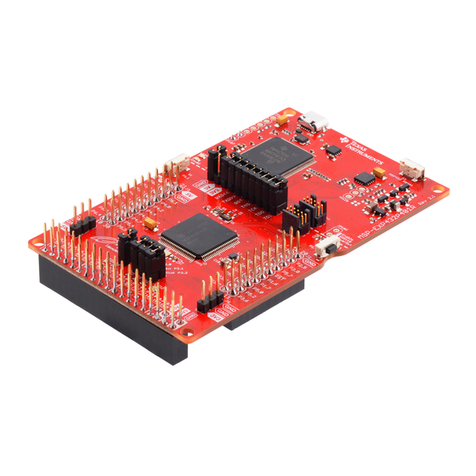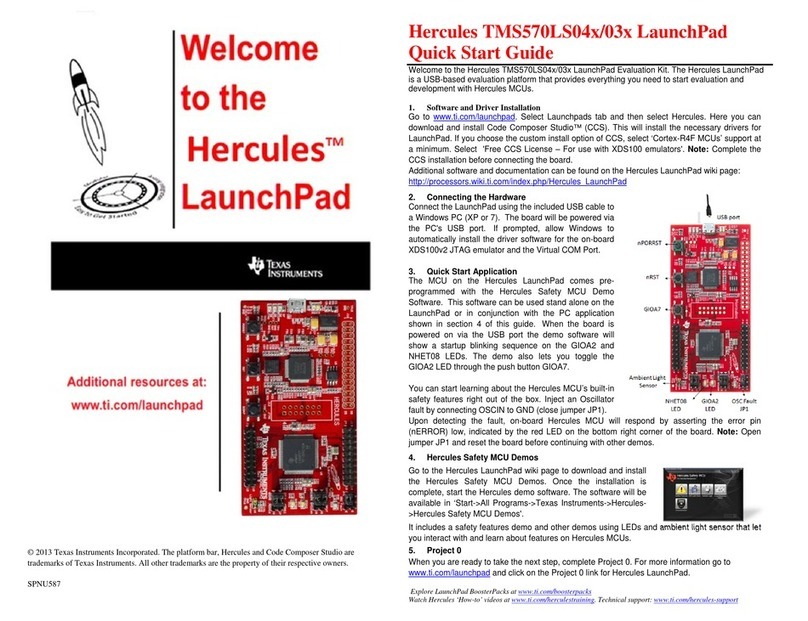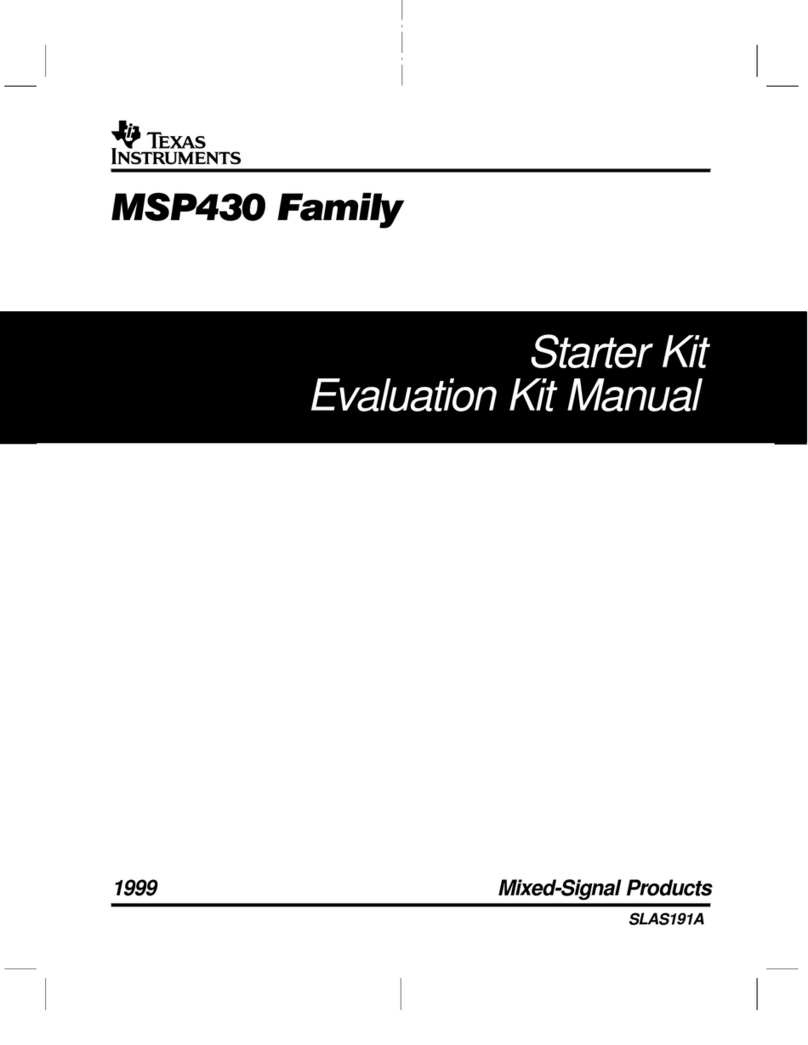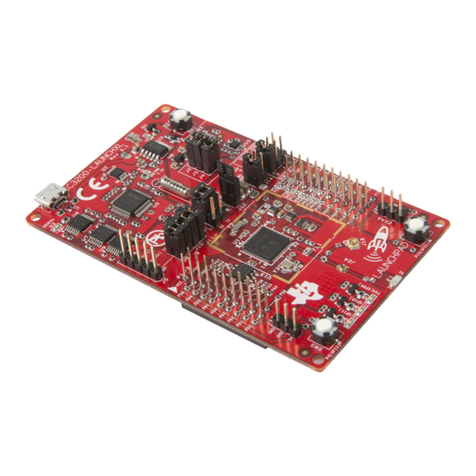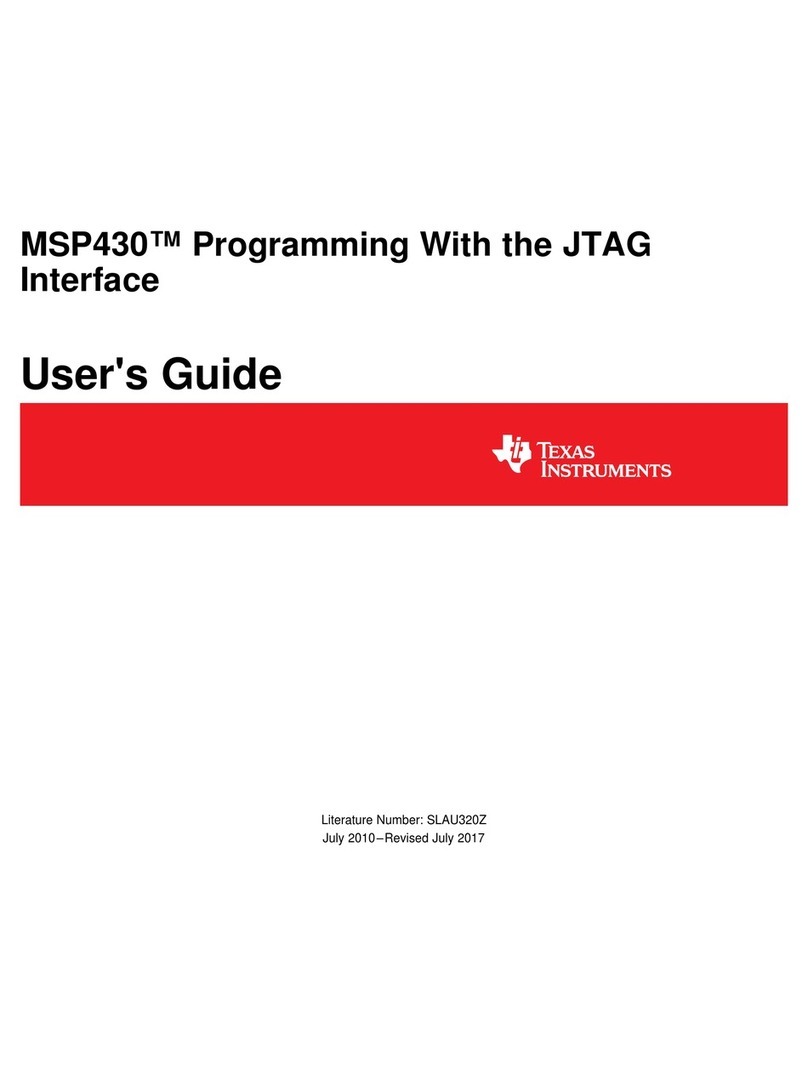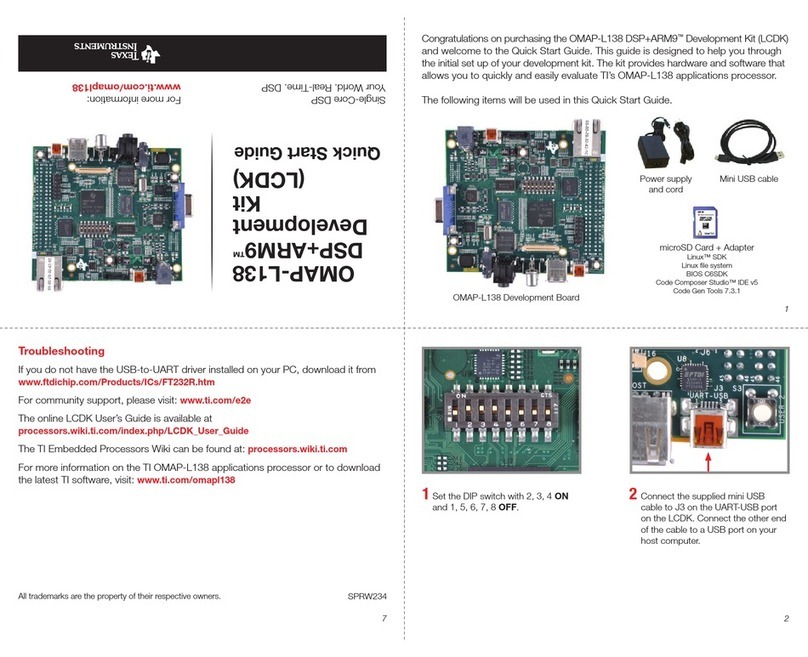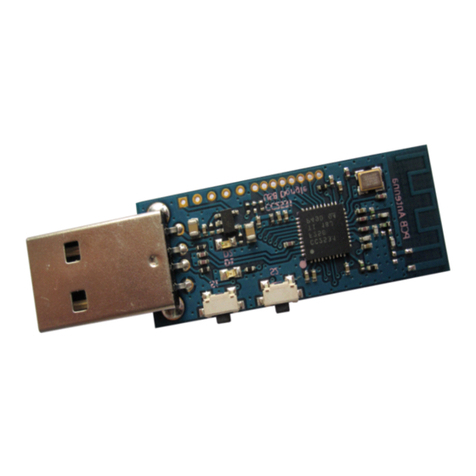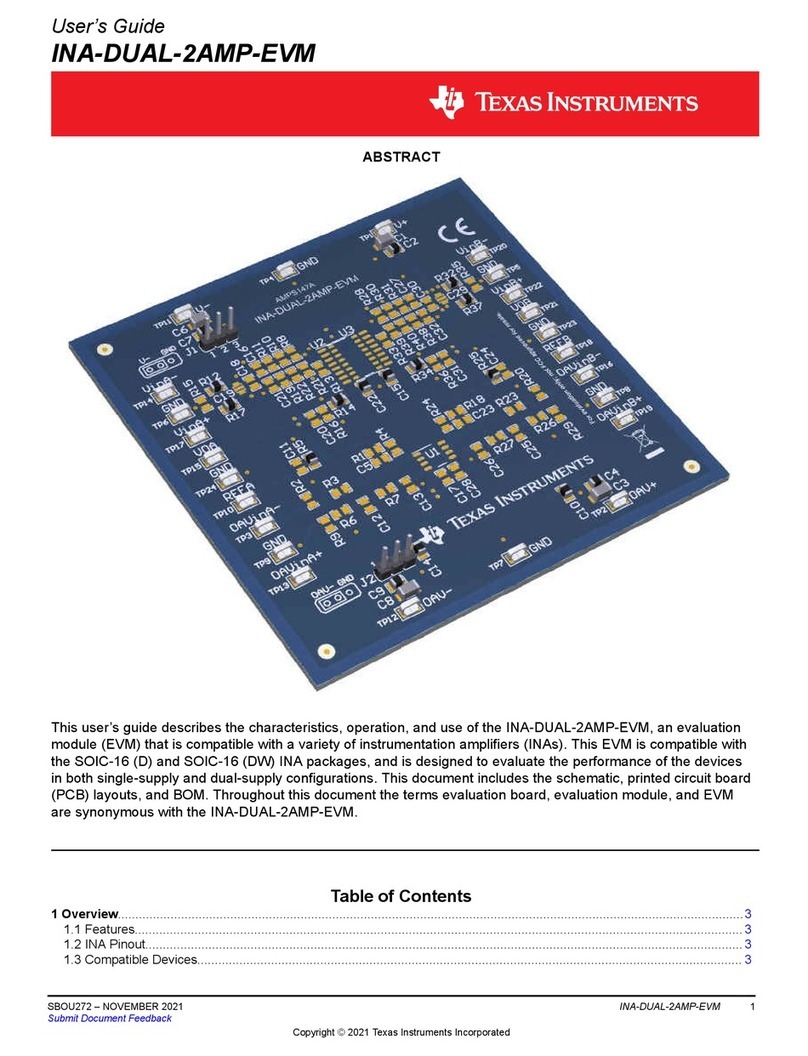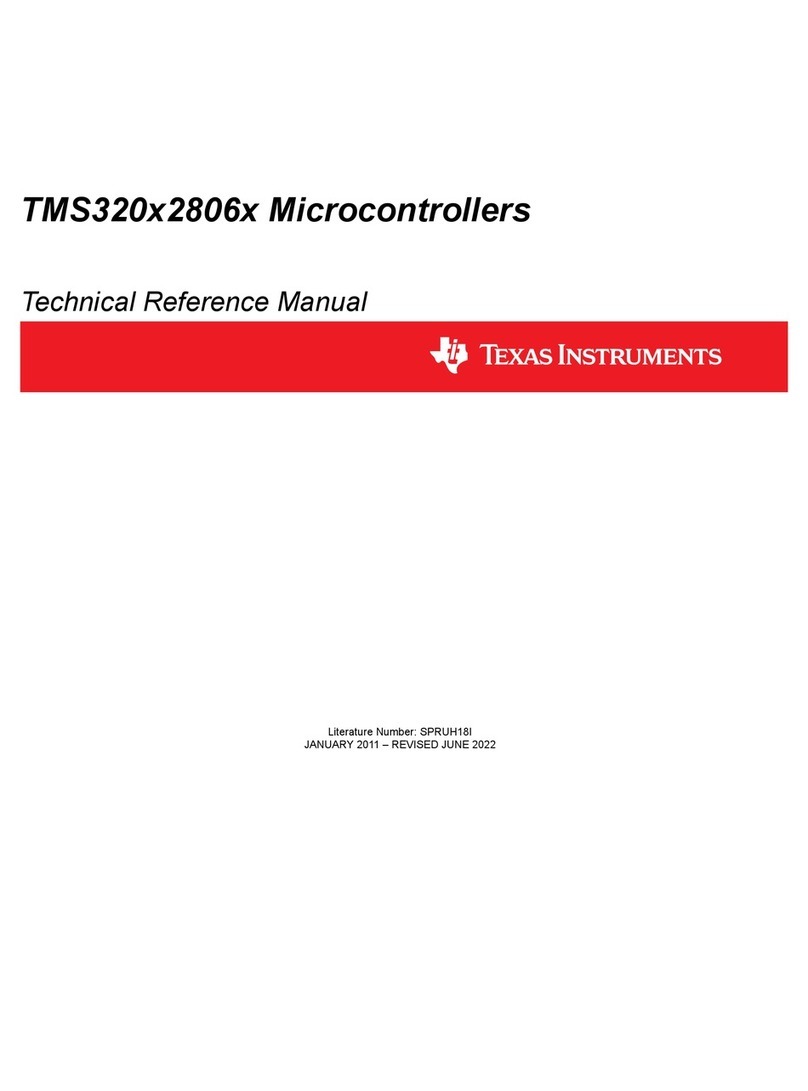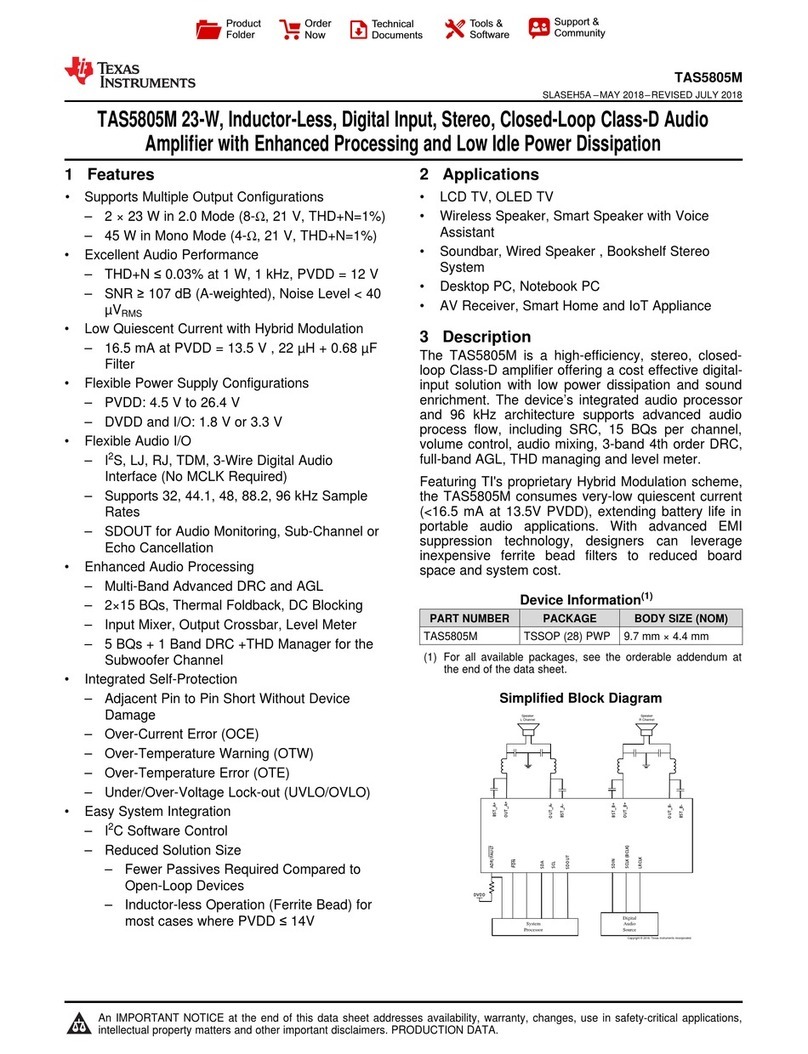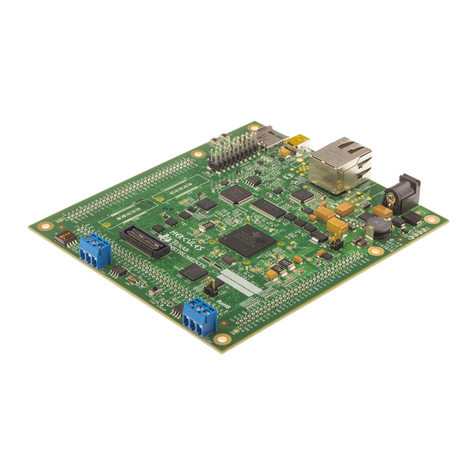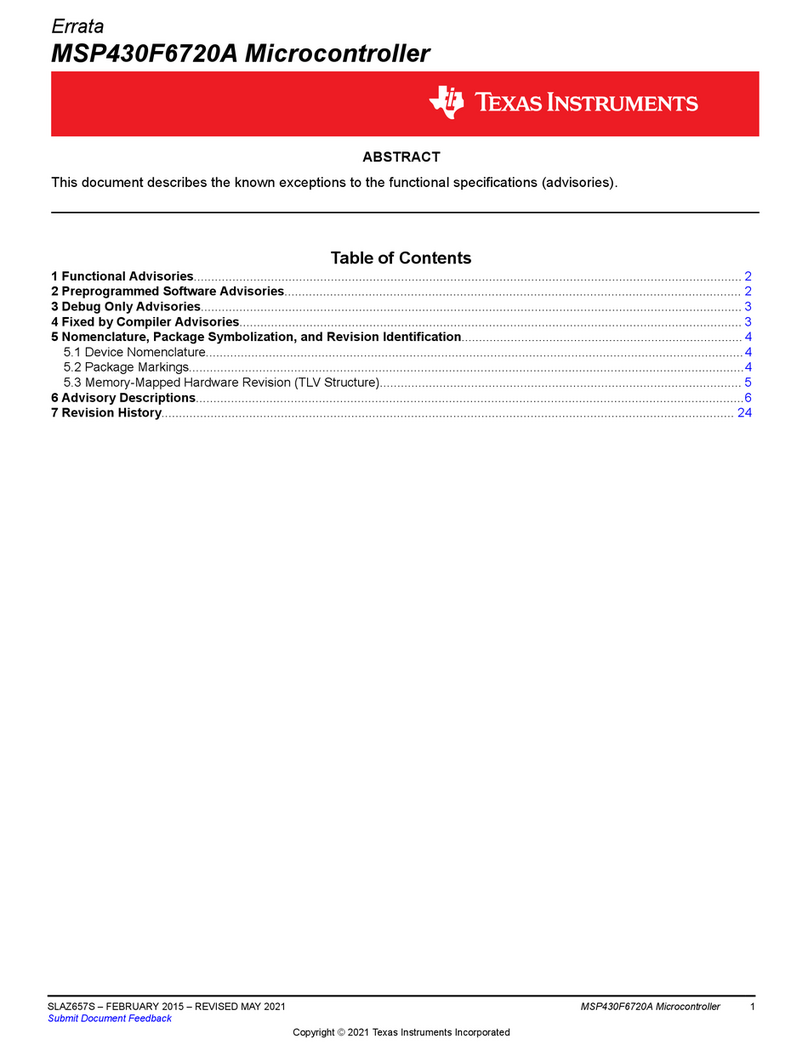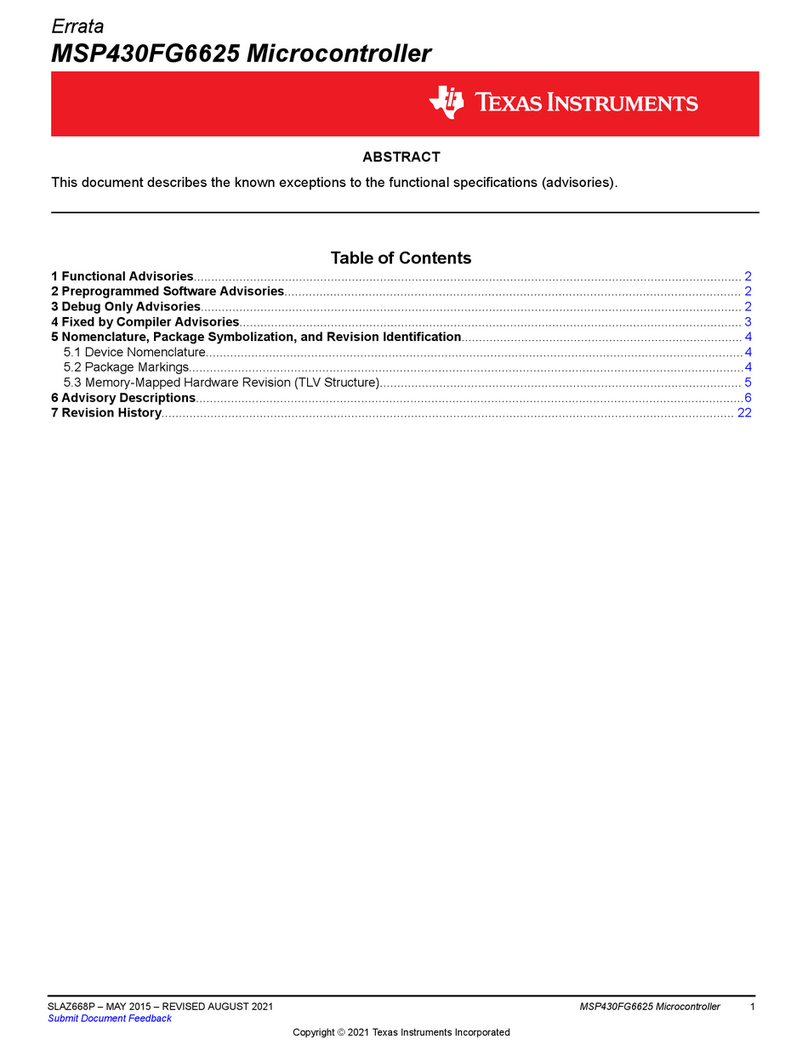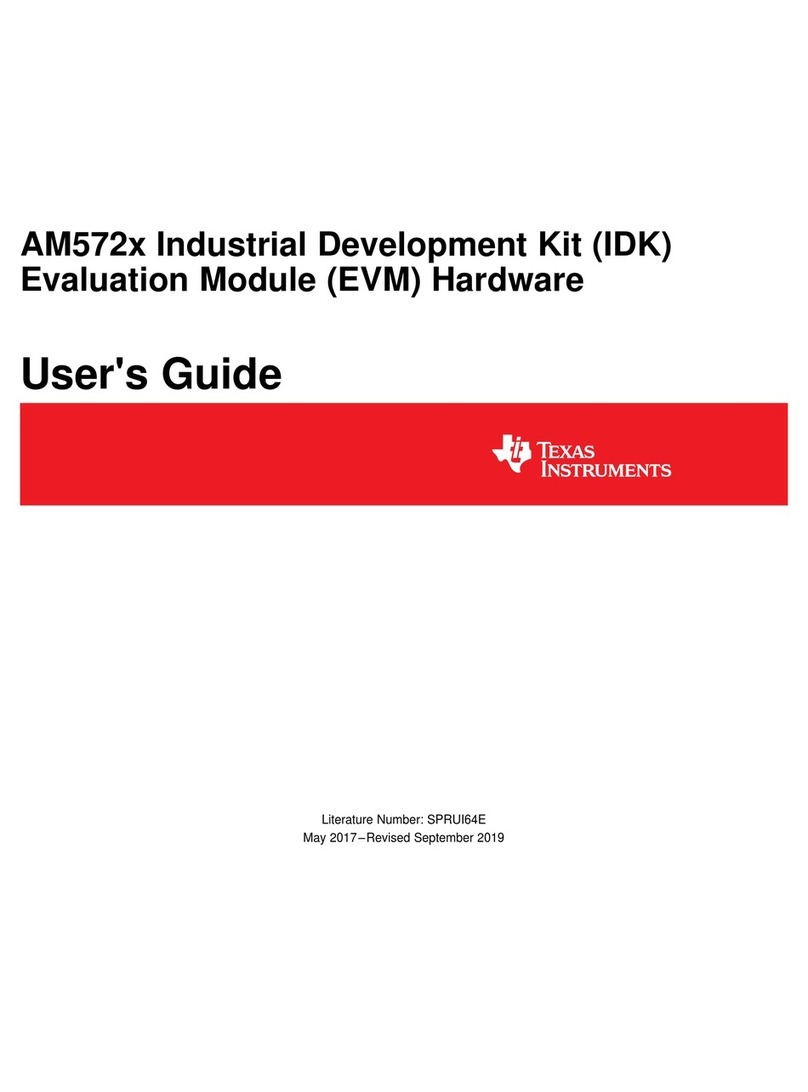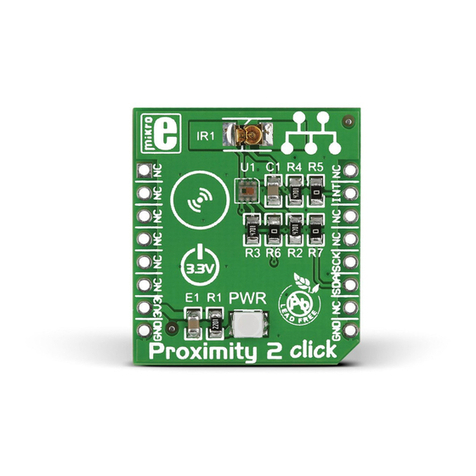
User’s Guide
TPS65941212-Q1 and TPS65941111-Q1 PMIC User Guide
for Jacinto™ 7 J721E, PDN-0B
ABSTRACT
This user’s guide can be used as a guide for integrating the TPS65941212-Q1 and TPS65941111-Q1 power
management integrated circuits (PMICs) into a system powering the Automotive Jacinto™ 7 DRA829 or
TDA4VM processor.
Table of Contents
1 Introduction.............................................................................................................................................................................2
2 Device Versions...................................................................................................................................................................... 2
3 Processor Connections..........................................................................................................................................................4
3.1 Power Mapping.................................................................................................................................................................. 4
3.2 Control Mapping.................................................................................................................................................................7
4 Supporting Functional Safety Systems..............................................................................................................................10
4.1 Achieving ASIL-B System Requirements......................................................................................................................... 11
4.2 Achieving up to ASIL-D System Requirements................................................................................................................11
5 Static NVM Settings..............................................................................................................................................................13
5.1 Application-Based Configuration Settings........................................................................................................................13
5.2 Device Identification Settings........................................................................................................................................... 14
5.3 BUCK Settings................................................................................................................................................................. 14
5.4 LDO Settings....................................................................................................................................................................16
5.5 VCCA Settings................................................................................................................................................................. 17
5.6 GPIO Settings.................................................................................................................................................................. 17
5.7 Finite State Machine (FSM) Settings............................................................................................................................... 20
5.8 Interrupt Settings..............................................................................................................................................................20
5.9 POWERGOOD Settings...................................................................................................................................................23
5.10 Miscellaneous Settings.................................................................................................................................................. 24
5.11 Interface Settings............................................................................................................................................................25
5.12 Multi-Device Settings..................................................................................................................................................... 26
5.13 Watchdog Settings......................................................................................................................................................... 26
6 Pre-Configurable Finite State Machine (PFSM) Settings.................................................................................................. 26
6.1 Configured States............................................................................................................................................................ 27
6.2 PFSM Triggers................................................................................................................................................................. 28
6.3 Power Sequences............................................................................................................................................................ 29
7 Impact of NVM Changes.......................................................................................................................................................49
8 References............................................................................................................................................................................ 50
9 Revision History................................................................................................................................................................... 50
Trademarks
Jacinto™ is a trademark of Texas Instruments.
All trademarks are the property of their respective owners.
www.ti.com Table of Contents
SLVUC32B – JUNE 2021 – REVISED FEBRUARY 2022
Submit Document Feedback
TPS65941212-Q1 and TPS65941111-Q1 PMIC User Guide for Jacinto™ 7
J721E, PDN-0B
1
Copyright © 2022 Texas Instruments Incorporated
